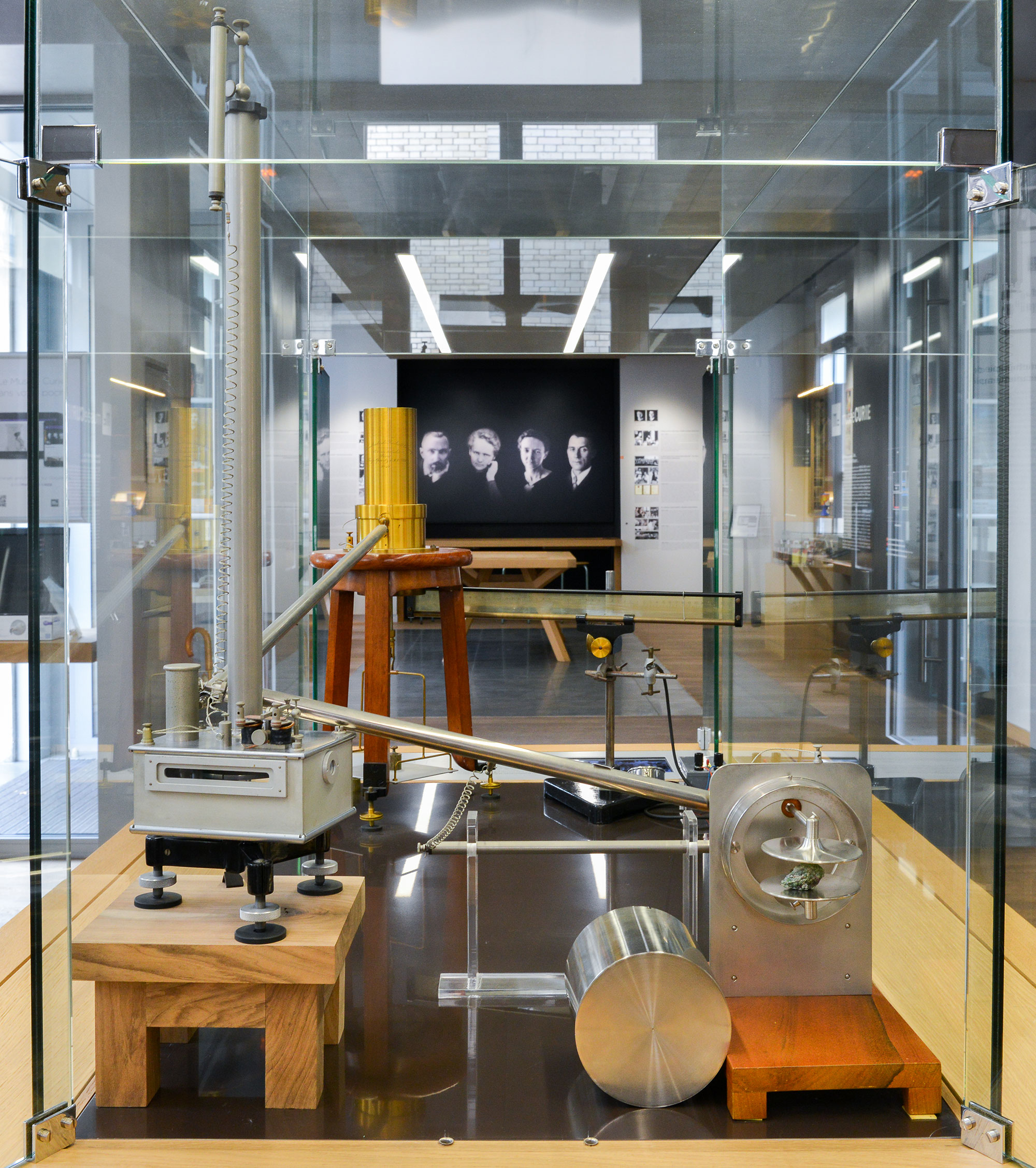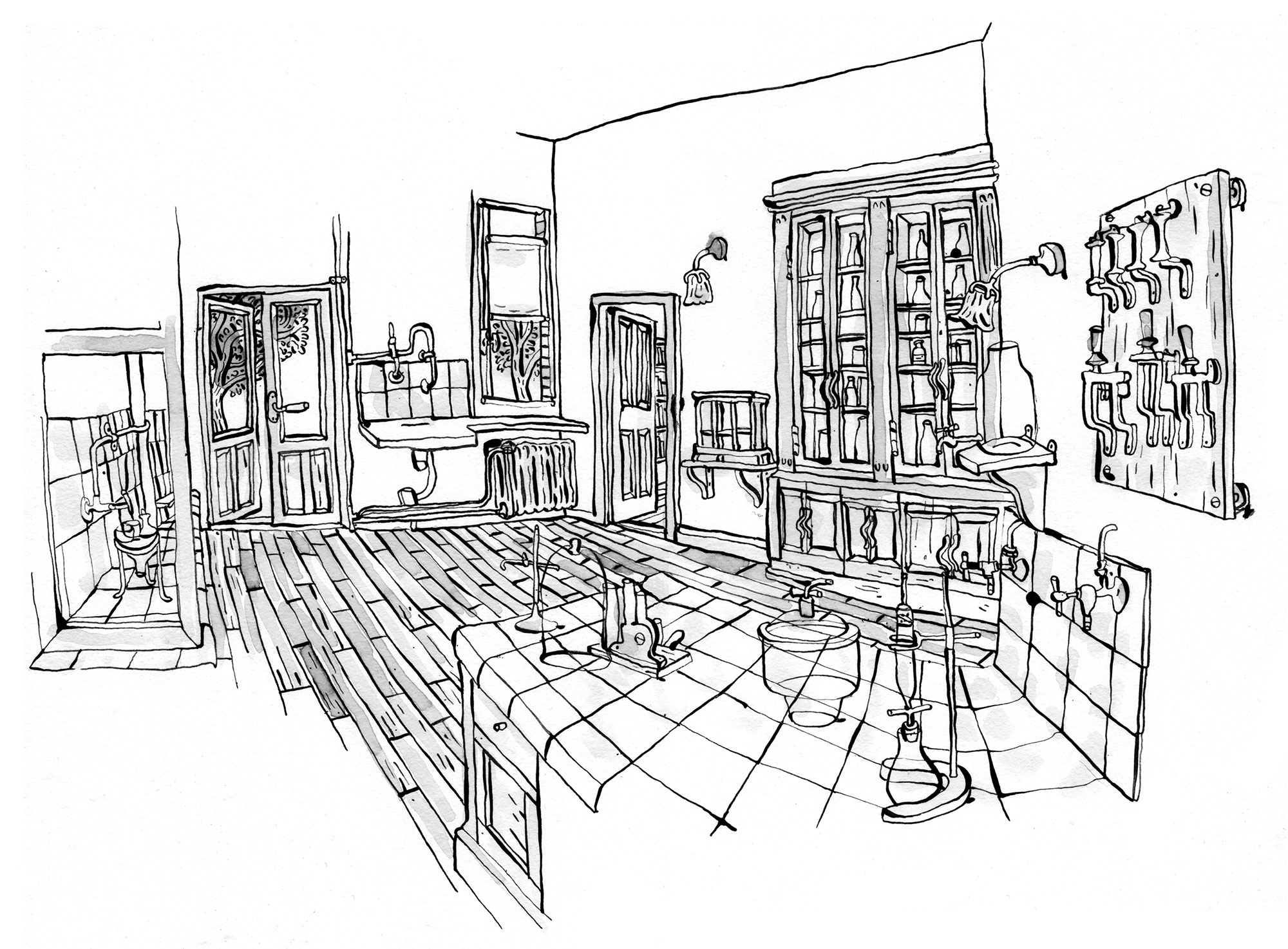
History of the project
In 1898, Marie and Pierre Curie discovered two new radioactive elements, polonium and radium, using a device that could detect and measure the invisible rays that they emitted. Composed of an ingenious combination of instruments and used for over a half-century at the Curie laboratories, this method for measuring radioactivity was gradually abandoned in the 20th century when Geiger-Müller counters were introduced and enhanced. A century later, in 1998, some physicists and historians took an interest in the obsolete devices. Referencing the Curie Museum’s archives, they tried to make them operational again but were unsuccessful. The devices were nevertheless displayed to the public and shown in context in permanent and temporary exhibitions both in France and abroad.
Then, in the early 2000s, several restored and replica Curie methods were put into operation at various institutions devoted to French heritage. In 2004, the Ecole Supérieure de Physique et Chimie Industrielles de la ville de Paris (ESPCI or Advanced Industrial Physics and Chemistry Institute of the city of Paris) had copies of the Curies’ instruments made, and in 2005, for the International Year of Physics and with the support of a grant from the Regional Cultural Affairs Department and the Regional Delegation for Research and Technology, it was the Curie Museum’s turn. More recently, the Nobel Museum in Stockholm acquired a replica, and the University of Rennes 1 in France also drew from its physics collections to reproduce this historic experiment. In these ways, the radioactivity measurement method was revived for educational demonstrations.

A unique tool to explain a complex device to visitors
The Curie Museum regularly holds special events devoted to the Curie method, presenting the story of the Curies and demonstrating their instruments. The events have been a big success with visitors, but without someone on hand to explain it, the Curie method is incomprehensible to most people. Although the context had been recreated using old photos that could be seen through a viewer and videos and cards had been made to explain how the devices worked, this was not enough to offer visitors an independent learning experience, especially since the instruments are complex and the rays measured are invisible.
The digital comic devoted to the Curie method was devised as a solution to these difficulties. The main goal of this project was to share information on the history and functioning of the Curie method. The digital format makes it possible to broaden the scope of the content inside the museum, giving visitors greater independence, and also to go beyond the museum’s walls to reach a wider audience. A cross between a comic and a historical novel, The Curie Method was created especially for teens and young adults.
The history of how radium and polonium were discovered demonstrates the way scientific research works, even today, and the fact that major discoveries do not depend merely on scientific intuition but also require skill in using technological tools. The comic format makes learning about scientific tools easy and fun for an audience of non-specialists. Readers who want to learn more can take advantage of the augmented features of The Curie Method to view digitized archives and read articles written by experts at the Curie Museum.
The tool used to create The Curie Method
The tool was developed in PHP and HTML5 by the studio Mosquito. It uses SPIP core software, a widely used open-source CMS, and augments it with functions that create a narrative in the form of a digital comic. To make a comic with this tool, the user creates chapters that can contain an unlimited number of boxes. Each box is made up of an unlimited number of layers and each of these layers can be animated and synchronized individually. All of this content is then made available on a website in a fully user-responsive interface with ergonomics designed for an optimized reading experience on a PC, smartphone or tablet.








